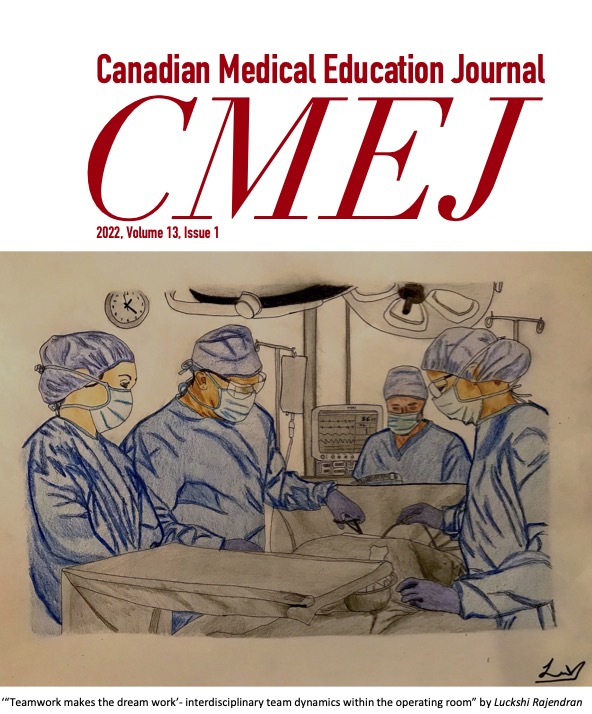Feedback guide for direct observation of family medicine residents in Canada: a francophone tool
DOI:
https://doi.org/10.36834/cmej.72587Abstract
Background: There are no CanMEDS-FM-based milestone tool to guide feedback during direct observation (DO). We have developed a guide to support documentation of feedback for direct observation (DO) in Canadian family medicine (FP) programs.
Methods: The Guide was designed in three phases with the collaboration of five Canadian FP programs with at least a French-speaking teaching site: 1) literature review and needs study; 2) development of the SPOD Feedback Guide; 3) testing the Guide in a video simulation context with qualitative content analysis.
Results: Phase 1 demonstrated the need for a narrative guide aimed at 1) specifying mutual expectations according to the resident's level of training and the clinical context, 2) providing the supervisor with tools and structure in his observations 3) to facilitate documentation of feedback. Phase 2 made it possible to develop the Guide, in paper and electronic formats, meeting the needs identified. In phase 3, 15 supervisors used the guide for three levels of residence. The Guide was adjusted following this testing to recall the phases of the clinical encounter that were often forgotten during feedback (before consultation, diagnosis and follow-up), and to suggest types of formulation to be favored (stimulating questions). , questions of clarification, reflections).
Conclusion: Based on evidence and a collaborative approach, this Guide will equip French-speaking Canadian supervisors performing SPOD in family medicine.
Downloads
Downloads
Published
How to Cite
Issue
Section
License
Copyright (c) 2019 Miriam Lacasse, Jean-Sébastien Renaud, Luc Côté, Alexandre Lafleur, Marie-Pierre Codsi, Marion Dove, Luce Pélissier-Simard, Lyne Pitre, Christian Rheault

This work is licensed under a Creative Commons Attribution-NonCommercial-NoDerivatives 4.0 International License.
Submission of an original manuscript to the Canadian Medical Education Journal will be taken to mean that it represents original work not previously published, that it is not being considered elsewhere for publication. If accepted for publication, it will be published online and it will not be published elsewhere in the same form, for commercial purposes, in any language, without the consent of the publisher.
Authors who publish in the Canadian Medical Education Journal agree to release their articles under the Creative Commons Attribution-Noncommercial-No Derivative Works 4.0 Canada Licence. This licence allows anyone to copy and distribute the article for non-commercial purposes provided that appropriate attribution is given. For details of the rights an author grants users of their work, please see the licence summary and the full licence.











